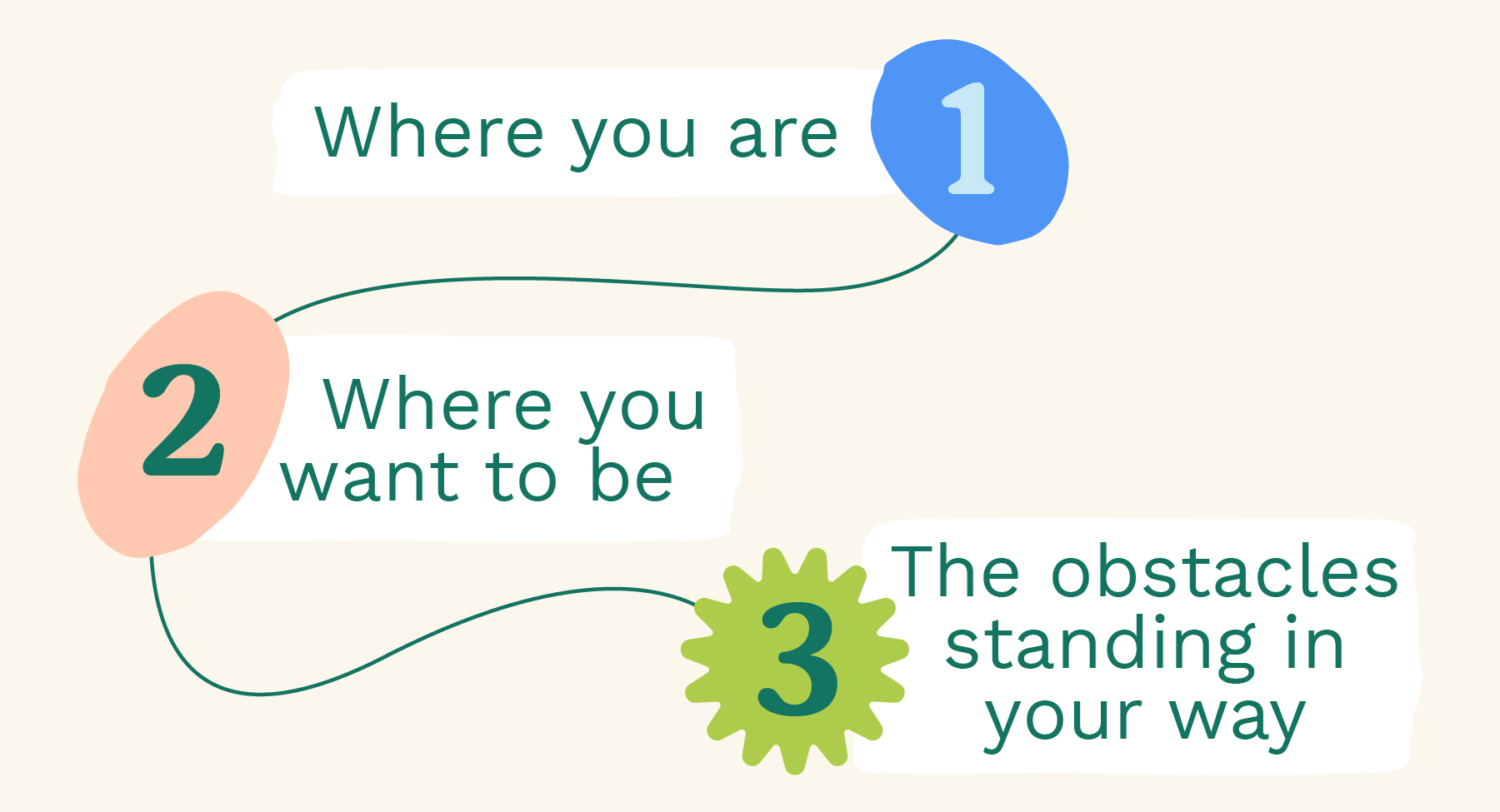Avoiding Bad Strategy
The word “strategy” gets so overused and misapplied, it’s sometimes hard to know what it actually is (or what you’re getting).
Goal-setting is an important part of strategy, although if that’s where your strategy ends, it’s very unlikely those goals will ever become reality.
What Makes an Effective Strategy?
The ultimate goal of strategy is to guide your actions moving forward. So to be effective, strategies must include a set of concrete action steps designed to lead your organization to success.
But to know which steps are appropriate, effective strategies must account for three basic variables:
Where you are
Where you want to be
The obstacles standing in your way
Once you’ve identified these variables, you’ll be in a position to develop a set of action steps to get from point A to point B.
That’s strategy in a nutshell, although the specific shape it takes will depend on the nature of the problem you’re trying to solve.
A strategy designed to reduce operational costs will look a lot different than a strategy designed to grow your following on social media.
But the same basic framework applies in both cases: Where are we at now? Where do we want to be? And what are the factors standing in our way?
Start With the Problem
Einstein once said that if he had an hour to save the world, he would spend 55 minutes defining the problem, then 5 minutes solving it. That’s about as good of a primer on strategy as one could ask for.
Once you understand each of the variables above well enough to distill them into simple language, all it takes is a little expertise and imagination to arrive at a solution.
For Example…
At Green Gate, one of our core services is Brand Strategy. There are many ways of defining “brand,” but for the purposes of this discussion, let’s say that a brand is the space in the Venn Diagram where our understanding of ourselves (that is, our offer, our value, our personality) overlaps with the way others perceive us.
For strong brands, that space is large.
For weaker brands, it might be only a sliver.
The goal of brand strategy then is to strengthen your brand by bringing those two circles into as close alignment as possible.
Applying our framework above, we should answer each of these questions to create an effective brand strategy:
Where Are We?
Or, in the case of a brand, the better question might be “Who are we?” Additionally, what is our purpose, and what do we care about? What is the nature of the value we are offering, and how well does that align with how we are perceived? In other words, is our “sliver” big or is it small?
Where Do We Want to Be?
How do we want to be perceived, and what will be the result of achieving this perception? More revenue? More press? More impact? This stuff is all important to think about, but the only way to actually get there is by taking a full account of the obstacles in front of us.
What’s Standing in Our Way?
What perceptions and misperceptions do our audiences have about us? What misperceptions do we have about ourselves? What is the actual value we’re offering, and how is that value different from our competitors? Do we fully understand the problem we’re addressing, and are we targeting the right people?
Where Are You?
These questions aren’t easy to answer. They require deep thought and exploration. And the fact is, people within your organization may answer them in different ways.
Once you’re able to clarify and align on each of these, you’ll be that much closer to a winning strategy. Although it’s important to note that clarity itself is not a strategy. Identifying the variables above is crucial, but navigating those barriers requires more than just awareness. It requires a set of concrete action steps that actually move you from where you are to where you want to be. Effective strategies include both awareness and action.
These are the kinds of conversations we love at Green Gate. We’ve structured our Brand Strategy engagements into two options. First, where we do most of this thinking and research for you, providing our insights along with turnkey assets. Additionally, we offer a workshop format, where we guide you and your team through the process of answering these questions.
To start a conversation about your organization’s brand, click below. We’d love to hear from you.
More Marketing Tips
Sign up for our newsletter to receive updates and tips on how to improve your marketing and communications.



